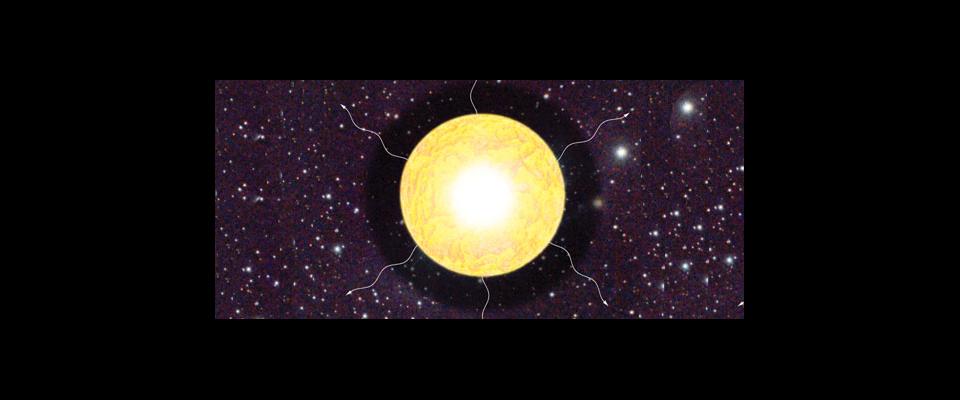It takes more than luck to find a supernova. Here’s a look behind the scenes.
On August 24, astrophysicist Peter Nugent was playing a little catch-up. Nugent, an adjunct professor at Berkeley and group leader of the Computational Cosmology Center at Lawrence Berkeley National Laboratory, settled in to look at data collected overnight by the Palomar Transient Factory (PTF). This fully automated survey based at Caltech searches for transients, a catch-all term for as yet unidentified astronomical objects that suddenly appear, change, and fade away.
Computer upgrades had put the nightly analyses behind schedule, so Nugent, who heads up real-time detection for PTF, was getting them back on track. PTF’s computers had turned up a faint spot in the Pinwheel Galaxy, located near the handle of the Big Dipper. Nugent didn’t think it would amount to much, but in the off chance it might be a supernova, he reached out to his international PTF colleagues. One turned a telescope in the Canary Islands (where it was already dark) toward the spot. The confirmation that it was a Type Ia supernova shocked Nugent, who deemed it “an instant cosmic classic.”
Type Ia supernovae, formed by a stellar explosion, are sometimes called “standard candles” because they emit light at fairly uniform levels. This characteristic was key to understanding dark energy, the concept that this year earned Berkeley’s Saul Perlmutter a Nobel Prize. The Pinwheel Galaxy supernova, just 21 million light years away, is the closest Ia observed in decades. Discovering it so soon after its birth was visible to us will shed light into the physics of how and why these stars explode.
Such discoveries can be pure luck. Nugent points out that if they had observed that area of space just a few hours earlier, they might have missed the supernova entirely. But there are ways to increase the odds, and that’s where the Palomar Transient Factory comes in.
Fully operational in 2009, PTF aims to “undertake a systematic exploration of the explosive night sky,” says Caltech professor Shrinivas Kulkarni, Ph.D. ’83, the group’s principal investigator. “We know that there are things that go ‘bang’ in the middle of the night, and we want to quantify it.”
In just a few years, the team has discovered more than 1,300 supernovae—nearly 50 percent more than the combined total found by other groups within the same period. Kulkarni says a project like PTF includes state-of-the-art hardware and software. But he reserves special praise for the international set of researchers, what he calls “teamware”: people separated in location and time—as far from one another as Israel and England—but united in ambition.
Through a 48-inch telescope at Caltech’s Palomar Observatory in Southern California, PTF records initial observations that are then transmitted to Berkeley Lab. There, Nugent runs programs on supercomputers housed at the National Energy Research Scientific Computing Center to identify and classify potential objects.
The programs incorporate algorithms developed by Berkeley associate professor of astronomy Joshua Bloom, that teach computers to identify anomalies—like a spot of light where there was none before. The programs then evaluate the object’s characteristics to figure out what it might be, and whether it’s worth pursuing. The group at PTF is getting confident enough in the results that they’ve expanded the software to trigger follow-up observations on its own the same night. The strength of the algorithms is a key part of PTF, because human researchers couldn’t sift through this data by hand. “What you’re looking for is a change in the sky, but it turns out we have a lot of noise,” explains Bloom. “We find about a million [candidates] a night, of which only a thousand are real, only ten of which we’re interested in. It’s a huge needle-in-a-haystack problem.”
It’s this process that brought the object now known as SN2011fe to the attention of Nugent, who in turn triggered the secondary observations. “It was silicon meets carbon-based intelligence getting this one discovered,” says Bloom. Proof, in other words, that the algorithms were spot on.
The supernova struck a chord with the public, too. “It’s easily the best supernova in the Northern Hemisphere in 40 years for amateurs,” says Nugent. The discovery, along with tips on how people could see it themselves, was featured on NPR, PBS, and scores of other outlets. At a special event at Chabot Space & Science Center in Oakland, Nugent recalls giving five talks back-to-back to the thousand people who came to catch a glimpse of SN2011fe.
Nugent hauled out his own 8-inch telescope and set it up in his front yard so his family could take a look. “It was booming bright,” he says. And despite having seen so many supernova images on screen in his career, this was only the second one he’d seen for himself through an eyepiece. He was excited. “To know the photons are hitting your eye is really cool.”





















